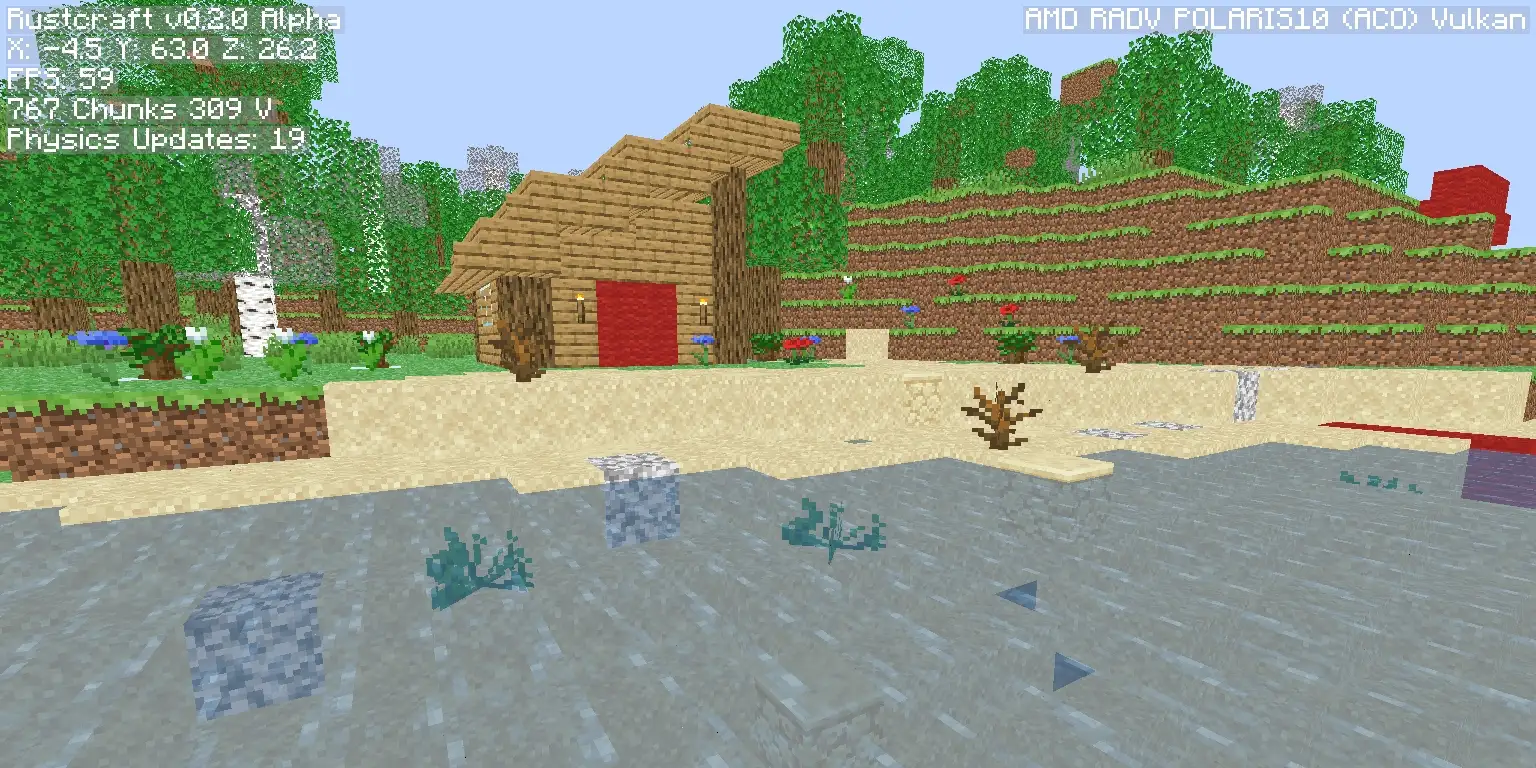
RustCraft Mid Project Review

RustCraft has been by far the most advanced and educational of my personal projects to date. It has pushed me to learning many new programming concepts from Graphics APIs to Entity Component Systems helping me to understand the game engine pipeline more fully. As it has been a learning process, I wanted to reflect on the decisions I have made this far and what I would do differently with my new-found knowledge.
Rust
I chose Rust because of my goal to achieve high performance with the project, as well as to expose myself to lower-level languages and concepts to further understand the overall software toolchain. This is one of the choices I am most happy with as Rust allowed me to create a very robust codebase that was clean and exposed a safe interface to interact with while not restricting my ability to heavily optimise.
In the beginning of the project this decision seemed like a poor one as I had only used Rust in a very limited capacity before. The borrow checking functionality of Rust made the object-oriented approach I took to creating the engine very difficult. I managed to get basic functionality working, however anything that required access to more than one variable at a time meant that the project would refuse to compile. To solve this and many other problems I settled on using an Entity Component System (ECS) for my core engine loop. This would not only solve my Rust borrowing checker problems but upon reflection turned out to be a large strength of the project, allowing me to compartmentalize every aspect of the engine to provide a nice and simplified codebase. This is because I used an ECS to manage my core render loop, not just the user facing objects. This means that to begin a frame I simply dispatch the mesh building system, the texture system, the UI system and then finally render the results to the screen. This worked especially well and meant that the entire engine utilised multiple threads well.
At the current point in the project my experience in Rust means that it is not taking significantly longer to write than equivalent code in another language while still promising safety and stability. I think the decision to use Rust for this project was a very productive decision which has helped me to deliver one of the main goals of the project, to have performant voxel rendering.
wgpu-rs (Vulkan-like graphics api)
The graphics API used for RustCraft was a very important one, I wanted the flexibility to create a highly compatible and performant voxel engine. These two attributes are hard to get together, I looked through many of the graphics crates in the Rust library and settled on wgpu-rs. It is essentially a wrapper over Vulkan, DirectX and WebGPU simply allowing code to be run on all three of these API’s while still being low level enough to optimise for speed. This was another major strength of RustCraft, usually porting engines to use multiple graphics API’s and support web at all is a gigantic undertaking – however because of this library RustCraft was able to run on the web, on desktops, gaming consoles and Linux!
This was also a major change from what I am used to,
previously only having used GUI libraries such as that on
Android. Having to allocate buffers manually and schedule
render passes led to me developing my knowledge of the
graphics ecosystem significantly. The decision to use wgpu-rs
meant that I kept options for alternate platforms open, while
allowing for high amounts of optimisation and while being not
as verbose as direct Vulkan. I am very happy with this
decision; however, it is one of the biggest challenges of the
project.
If I were to do the project again, I would have
approached the problem with more planning and abstraction
rather than the direct approach I have taken to storage. This
is especially represented in Mesh storage where instead of
abstracting a mesh into a single variable, it is spread over
buffers, descriptors and assets which makes it messy and
overcomplicated to work with. Creating generic types like this
that would be used around the engine, and a more cohesive
vision for how the graphics interacts with the rest of the
engine would increase the code quality.
I really enjoyed making RustCraft, from beginning to its current state it has taught me so much and I can’t wait to continue learning in the future!